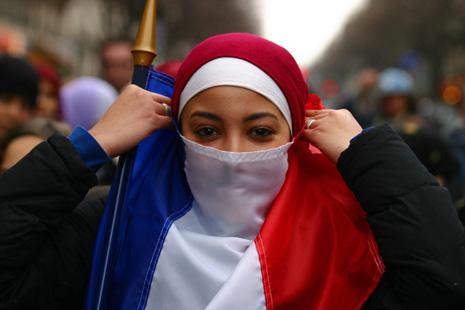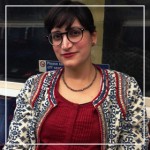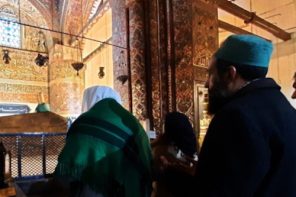Can Islam Be French? Pluralism and Pragmatism in a Secularist State. By John B. Bowen, 2010, Princeton: Princeton University Press. ISBN 9780691152493
The incompatibility of Islam and ‘Western values’ is not a new idea, particularly within debates around secularism, states, minorities and the political challenges of living with the ‘other’ in developed countries. Discussing similar themes, Can Islam Be French? is perhaps the first comprehensive book that has investigated the most controversial debates portraying Islam as a ‘religion of the other’ in France using ethnographic methods. Bowen’s book demonstrates how Muslims in France use their migration trajectories, their pragmatic use of spaces and practices, and through opening debates around religion and the republic, ‘bridge Islam towards French legal norms’ (p. 179). As such, the book is divided into three sections. The argument in this book rests on the ‘visibility’ of the religion and religious spaces. Although a large number of nonMuslim French citizens believe that Islam can be French, public figures increasingly criticise Muslims for having values that are incompatible with French citizenship.
The first section, Trajectories, contains Chapters One and Two, which set out to start the discussion by asking whether Islam trespasses political boundaries. The author asks whether it can ‘be accepted [as] part of the French social landscape’ (p. 3) and if ‘Islam [can] become a workable reality for Muslims who wish to live fulfilling social and religious lives in France’ (p. 5).
His approach rests on ‘anthropological research of public reasoning’, set mainly in mosques, Islamic schools, public meetings and on internet websites where ‘pluralistic forms of civic integration’ could be experienced (p. 6). Muslims in France (as is the case in other countries with Muslim migrants) are counted as a minority group who need to dwell in dual spaces: one is where they are counted as a ‘community’ of people of their own kind and here it is referred to as the transnational space, which they share with fellow Muslims; the other space is the national space that is based on the civic values of France and the one where the separation of state and religion is a significant signifier of French society. The public sphere is full of books that renounce Islamic tradition, which makes it difficult for Muslims and nonMuslims to make it a workable reality to live in France and be Muslim at the same time and, by doing so, brings into question whether Muslims are complete citizens or citizens on the sidelines. In (Chapter Two), Bowen summarises the history of the major Muslim groups in France. These trajectories tie strongly to the colonial history of France with North African countries (e.g. Algeria and Tunisia) and their labour agreements with others (e.g. Turkey).
The second section of the book draws mainly on spaces that Muslims occupy: mosques and schools, the former having significance to Islam and the latter to the secular state of France. Chapter Three presents the specific cases of three active mosques: the internal power relations and politics, their social practices, social services (including Eid provisions), marriage and divorce advice, lessons for young and old generations, and burial ceremonies, sermons and worship.
According to Bowen, ‘it is the social need for certain services and not specific features of worship traditions that shapes religious institutions’ (p. 62).

Chapters Four and Five revolve around the type of teachings, schools of thought and material used in these mosques. Some progressive teachers take ‘an adapted approach’ to Islamic teaching and research and place more emphasis on having handson knowledge about ‘learning to live as a Muslim’ (p. 66) in France, unlike the approach of Salafis whose reading of Islam mainly rests on a literal reading of the scripture. Bowen argues that for these teachers, similarly to pupils, they find themselves caught between two sets of social and cultural references such as French or Moroccan. He argues that identifying one as a Muslim is ‘one solution to this problem as it provides an “order” that many otherwise fail to find’ (p. 69). Applying a ‘middle way’, as described in Chapter Five, Bowen presents the solution that some of these imams present.
This middle ground of knowledge believes that Islam is ‘adaptable to all contexts’ (p. 90); that there are universal fixed principles that are unchangeable and the ones that are changeable are located in a ‘legal vacuum’ as there is no sacred text available about them.
The friction arises between those trying to attend to the objectives of Islam (maqasid) and those who believe in a more rigid reading of Islam. In general, students who go to these classes are believed to go there to learn in an Islamic way rather than learning about Islam itself. Some actors try to teach other domains of knowledge, not limiting their teachings to Islamic matters. Most students use these spaces to feel ‘at home’ with likeminded fellows that would eventually help them to achieve success in mainstream French society (p. 105). This leads to the next chapter, which discusses Islamic lessons as part of the French schools’ curricula.
In Chapter Six, the author discusses French formal schooling and the integration of Islamic lessons and thinking in a few existing private Islamic schools. Dhaou Meskin, a Tunisian imam, whose approach in teaching a great amount of Islam was discussed in this book, has created a school called ‘Success’ that emphasises a broader view of Islamic teaching such as the idea that girls do ‘not’ have to wear the headscarf and that boys and girls can sit together in classrooms. The importance of the description of the school and its curriculum, which must achieve the same standards as that of secular public French schools, is in demonstrating how the two contested domains of religion and secularism can work together. Bowen draws on the principles of laïcite, which schools in France are emblematic of. Meskin promotes the view that his school is a place where Muslims can integrate into French society. However, the predominant view in French society is that these institutions create an enclave for Muslims to remain different and secluded from the rest of the society. This view is especially promoted in the media, and is discussed more in relation to Muslim women. The chapter goes into details about concepts that clash with Islam (and religion in general) such as evolution, homosexuality and inheritance rules for men and women in Shari’a law and the researcher’s observation of discussions around these topics in the classrooms are interesting.
Perhaps these observations highlight the areas where pragmatic solutions are offered by teachers in order to reduce the tension aggravated by the media. For example, evolution is discussed as a ‘provisional claim’, homosexuality is presented as belonging to ‘them’ (the French people and not Muslims) and Shari’a based inheritance as a form of ‘Islamic equality’ for men and women. In these teachings, there is an ‘ethical distance’ between the scripture, representing certainty, and French society which is associated with change and uncertainty.
Chapter Seven presents the debates and metareasoning around the tools and schools of thought that exist to deal with Muslims’ necessities of life in the West. Not only do different Islamic schools have varying views on the everyday life issues of Muslims living in France, but also individuals who teach in a particular school might hold different beliefs regarding a specific problem and thus advise accordingly. A few examples of such ‘problems’ and their resolutions are discussed, including abortion, bank loans and hijab. Two existing and opposing methodologies include acting in the face of necessity and reality of life in the West and attending to the objectives (maqasid) of the Quran; the opposing view, however, sees this as an innovation (bid’a) and believes that Muslims can always find a way to adapt to new situations without the need to contradict the rules of Islam, even in the West. However, both approaches to answering Muslims’ questions on life are called ‘commitment to social pragmatism’ by Bowen (p. 156).
Chapter Eight focuses on ‘convergences of reasoning’, describing two processes that are directed differently but are similar in essence in that they both satisfy the values held by Islam and the Republic aiming to live convivially. Bowen explains these two processes through the example of Islamic and civil marriage in France. The first convergence discussed involves the Islamic laws moving towards secularism. The legal difficulties around not registering an Islamic marriage in a city hall has prompted some Islamic scholars in France to make civil registration a compulsory prerequisite of Islamic marriage in order to protect individuals in the case of a divorce and, in doing so, they go far enough to ‘equate’ civil marriages with ‘Islamic’ marriages. They do this by drawing on similarities between the two such as the requirement of the presence of others and the necessity of both parties’ consent. Bowen argues that the more damaging the consequences of avoiding city hall marriage are, the more civil ceremonies are represented fervently as Islamic.
The second convergence, which is described as a movement from French civil law towards Islamic practices, surpasses the differences that exist between Islamic and French laws. While the former was counted as backward and less civilised, French law was seen as more civilised and evolved. Hence, surpassing Islamic practices was necessary in order to become French. This was particularly true in relation to renouncing Islamic family law and has led some authorities in Algeria to declare that following the French law virtually meant abandoning Islam. The chapter concludes by stating that since 2009 jurists in France have been debating how Islamic marriages and divorces should be dealt with and, taking into account the issues around polygamy and noncivil registered marriages, their considerations are twofold.
On the one hand, they cannot deny the reunion of family members who are living transnationally; on the other hand, they would like to send a message emphasising the ‘kind of family norms and judicial processes that France sees as fair and gender friendly’ (p. 178).
The final chapter draws the various threads presented in the book together. Considering the possibilities of convergence from Islamic to French law and from secularism to Islamic practices, Bowen reminds the reader of those engaging in public discourses in France that argue Muslims’ ‘communalist’ tendency has prevented them from integrating in the Republic’s public space. These discourses argue that giving priority to religious norms stop Muslims adopting the requirements of laïcite (secularism) (p. 179). However, the complex picture that Bowen has drawn in the last chapter shows the important role religion (including Christianity and Judaism as well as Islam) has played in the schooling system and in secularist legal acts in France. What is known is that the established Muslim associations and private schools have indeed contributed to the integration of Muslim children by providing spaces where pedagogy is intended as a form of ‘spiritual inoculation against the Salafi approaches’ (p. 185). Readings of Islamic practices whose objectives rest on ‘common life’ seems to be more effective than preaching one particular pathway, and this route is similar to those that Catholics and Jewish French citizens paved. This method of analysis can offer a less dangerous and exotic view of Muslims’ practices, one that can be included in the narrative of the Republic; however, this message does not seem to be conveyed to the French politicians whose view of Muslims generalises them on the basis of the motives of a few individuals.
A missing point in Bowen’s book is the lack of emphasis on the ways in which Islamic fundamentalism in France is promoted through trajectories, spaces and debates. It seems that Bowen was hesitant in problematising the link between religious fundamentalism and the freedom of ideas. What seems to have led some scholars to take progressive views in order to ‘fit’ Islam into the lives of Muslims in France, is the excessive views towards ‘religious’ life. While in the absence of a criticism to overarching fundamentalist discourses, what are denied are the rights of women in communities.










